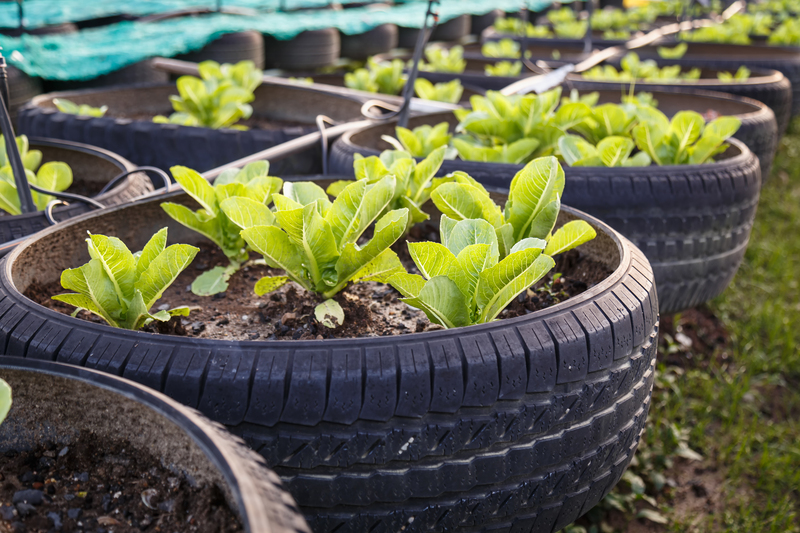Understanding the Nature of Hazardous Waste: A Comprehensive Guide
Hazardous waste is a serious environmental and public health concern worldwide. From industrial processes to everyday household products, the generation and improper handling of these wastes can have long-lasting negative impacts. Understanding the nature of hazardous waste is vital for companies, communities, and individuals alike. This in-depth article explores what makes waste hazardous, the types of hazardous waste, their sources, effects, regulatory frameworks, and safe management strategies.

What is Hazardous Waste?
Hazardous waste refers to any material discarded from industrial, commercial, household, or other processes that possess dangerous characteristics, making it harmful or potentially harmful to human health and the environment. These wastes can be in solid, liquid, or gaseous forms. What separates hazardous wastes from regular wastes are their unique properties that require special handling, disposal, and regulation.
Key Characteristics of Hazardous Waste
- Toxicity: Contains chemicals or substances that are poisonous to living organisms.
- Reactivity: Can react violently with air, water, or other substances.
- Ignitability: Easily catches fire under conventional conditions.
- Corrosivity: Has the ability to corrode metals or tissues (highly acidic or basic).
- Persistence: Remains in the environment without breaking down easily, causing long-term risks.
Defining Hazardous Waste: Legal Definitions and International Standards
Legal and regulatory bodies worldwide have established specific definitions and lists of hazardous materials. In the U.S., for example, the Resource Conservation and Recovery Act (RCRA) empowers the Environmental Protection Agency (EPA) to define and regulate hazardous waste. Internationally, the Basel Convention guides the transboundary movement and safe disposal of hazardous wastes globally.
Types of Hazardous Waste
The wide variety of hazardous wastes can be categorized in several ways. Here are the main types of hazardous waste based on their origin and properties:
1. Listed vs Characteristic Hazardous Waste
- Listed Waste: Wastes that are specifically listed by regulatory agencies as hazardous. These lists include wastes from certain industries or processes known to produce hazardous by-products.
- Characteristic Waste: Wastes not specifically listed but exhibiting hazardous properties such as ignitability, corrosivity, reactivity, or toxicity.
2. Common Categories of Hazardous Waste
- Industrial Waste: Generated from manufacturing and chemical processes (solvents, heavy metals, acids, etc.).
- Household Hazardous Waste: Everyday items such as batteries, paints, cleaning chemicals, used oils, and pesticides.
- Medical and Pharmaceutical Waste: Expired drugs, biomedical trash, contaminated materials from healthcare facilities.
- E-waste: Discarded electronic items that may contain toxic substances like lead, mercury, and cadmium.
- Agricultural Waste: Pesticides, fertilizers, and animal pharmaceuticals.
Sources of Hazardous Waste
If you're concerned about the environmental safety of your community or workplace, it's essential to know where hazardous wastes commonly originate:
Industrial Sources
- Chemical production and processing plants
- Metal manufacturing and finishing industries
- Petroleum refining operations
- Textile industry (dyeing, finishing chemicals)
- Mining and mineral processing
Household Sources
- Paints and varnishes
- Automotive fluids and batteries
- Pesticides and fertilizers
- Cleaning agents and aerosols
Healthcare and Laboratories
- Pharmaceuticals and cytostatic drugs
- Pathological and infectious waste
- Laboratory reagents and chemicals
Agricultural Operations
- Unwanted pesticides and herbicides
- Fungicides and animal treatment residues
How Hazardous Waste Harms the Environment and Health
The improper management of hazardous waste can wreak havoc on ecosystems, wildlife, and human health. Let's break down the main risks associated with hazardous waste:
1. Soil Contamination
Sloppy disposal or accidental leakage of hazardous substances into the soil can render land infertile. Toxic chemicals can seep down, contaminating groundwater and affecting food crops.
2. Water Pollution
When hazardous waste enters water systems via runoff or illegal dumping, it can destroy aquatic life, disrupt entire ecosystems, and pose serious risks to drinking water supplies.
3. Air Pollution
Incineration, chemical reactions, and volatile substances can release toxic fumes, particulate matter, and persistent organic pollutants into the air, causing respiratory diseases and other health issues.
4. Direct Impact on Human Health
People exposed to hazardous waste, either directly or indirectly, may experience adverse health outcomes, including cancer, neurological concerns, reproductive issues, and acute poisoning. Workers in waste management and nearby residents are especially at risk.
Regulations and Governing Bodies for Hazardous Waste
Due to its dangerous nature, hazardous waste is heavily regulated at national and international levels. Ensuring proper handling, transportation, treatment, and disposal is critical for minimizing risks.
Key Regulatory Frameworks
-
Resource Conservation and Recovery Act (RCRA) - USA:
Governs the generation, transportation, treatment, storage, and disposal of hazardous waste. -
Hazardous Waste (Regulation of Exports and Imports) Act - Australia:
Controls cross-border movements of hazardous materials. -
Basel Convention - International:
An international treaty designed to prevent the movement of hazardous waste from developed to less-developed countries. -
European Union Waste Framework Directive:
Lays out strict protocols for the management and classification of hazardous waste in the EU.
Responsibilities of Waste Generators
Regulations often place the burden of responsibility on the waste generator--the party whose activity produces hazardous waste. They must ensure:
- Proper identification and labeling of hazardous waste
- Safe onsite storage with spill containment
- Transportation only by licensed carriers
- Disposal at permitted facilities
- Maintenance of thorough records and manifests
Safe Management and Disposal of Hazardous Waste
To protect both the environment and public health, comprehensive hazardous waste management practices are essential. Here are the critical steps and best practices:
1. Identification and Classification
Before any treatment or disposal, waste must be carefully identified, tested, and classified according to its hazardous properties. This step often involves laboratory analysis and checking waste against regulatory lists.
2. Proper Storage
- Use leak-proof, labeled containers appropriate for the specific type of waste
- Segregate incompatible wastes to prevent dangerous reactions
- Store wastes in secure, well-ventilated areas with secondary containment
- Implement spill prevention and emergency response plans
3. Transportation
Only licensed or regulated waste transporters should handle the movement of hazardous wastes, utilizing safe and compliant vehicles. Detailed documentation (manifests) must accompany every shipment for tracking and legal purposes.
4. Treatment and Disposal Methods
Depending on type and risk, hazardous waste may undergo one or more of the following:
- Physical and chemical treatment (neutralization, precipitation, stabilization)
- Thermal treatment (incineration under controlled conditions to destroy organics)
- Biological treatment (bioremediation using microbes for organic wastes)
- Secure landfill disposal, especially for non-recoverable or non-treatable hazardous residues
- Recycling and resource recovery where possible to minimize waste volumes
5. Record Keeping and Reporting
Accurate logs of hazardous waste generation, handling, transportation, and final disposal are required for compliance and auditing. These records help track the fate of hazardous substances and ensure accountability.
Reducing the Generation of Hazardous Waste
Waste minimization is a critical strategy for managing hazardous materials. It not only protects the environment but also can reduce costs and liability for businesses.
Source Reduction Techniques
- Adopting cleaner production processes that use fewer or less hazardous materials
- Implementing process controls for quality and efficiency
- Substituting hazardous substances with safer alternatives
- Regular maintenance of equipment to avoid leaks or spills
Product and Process Innovation
- Designing products for durability and reduced toxicity
- Enhancing supply chain management to lower waste inputs
- Promoting the use of recyclable or biodegradable materials
Employee Training and Public Awareness
Educating workers and the public about handling, storage, and proper disposal of hazardous waste is a foundational aspect of effective waste management. Training minimizes the risk of accidents and encourages safe practices at all stages.
Emerging Issues in Hazardous Waste Management
The world of hazardous waste is evolving. Some current and emerging challenges include:
- Increasing quantities of e-waste with complex chemical mixtures
- Managing wastes from new manufacturing sectors, such as nanotechnology and pharmaceuticals
- Dealing with legacy contamination at old industrial and military sites
- Illegal international shipments and dumping of hazardous waste
- Growing demand for safe and circular economy solutions, like hazardous waste recycling

Conclusion
Understanding the nature of hazardous waste is fundamental to protecting public health and the environment. As waste streams become more complex, proactive approaches--ranging from strict compliance with regulations to fostering innovation for waste minimization--are vital. Whether you're a business owner, community leader, or concerned citizen, playing an active role in hazardous waste management will ensure a safer and more sustainable future for all.
To learn more about regulations in your area or to find out how you can responsibly dispose of hazardous waste, consult with your local environmental agency or waste management provider. By staying informed and committed, we can collectively reduce the risks posed by hazardous materials in our environment.
Frequently Asked Questions (FAQ) on Hazardous Waste
Q1: What are some examples of hazardous waste?
A: Common examples include industrial solvents, batteries (lead-acid or lithium), paints and varnishes, pesticides, pharmaceuticals, medical waste, e-waste (old computers, cellphones), and chemical cleaning products.
Q2: How can I tell if a waste is hazardous?
A: Check its composition for toxic, reactive, ignitable, or corrosive properties. Refer to government lists or consult laboratory analysis if in doubt.
Q3: What are the dangers of hazardous waste?
A: These wastes can pollute water, soil, and air, and cause acute or chronic health issues such as poisoning, cancers, and birth defects.
Q4: What should I do with household hazardous waste?
A: Never pour them down the drain or with regular trash. Use your local community's hazardous waste collection programs or designated drop-off sites.
Q5: Why is regulation of hazardous waste important?
A: Effective regulation ensures the materials are handled, transported, and disposed of safely, minimizing the risks to both people and the environment.
By understanding hazardous waste and acting responsibly, each of us can help keep our planet--and future generations--safe from harm.